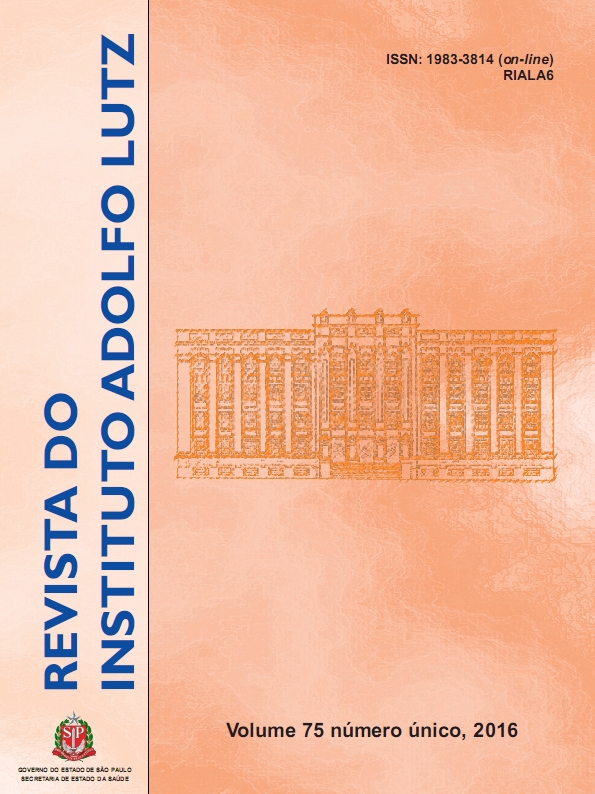Abstract
The aim of this study was to evaluate the hygienic-sanitary conditions of the hands of food handlers and of the surfaces in contact with foods in the hotel food and beverage area, before and after applying the intervention strategy. Two hotel food and beverage areas in Curitiba/PR, were evaluated using a checklist including personal and environmental hygienic criteria. Also, microbiological analyses were performed in samples collected from the handlers hands and from the surfaces in contact with foods, at two moments, before and after applying the intervention strategy. The intervention strategy was carried out for two months, with weekly monitoring by an outsourced professional, who assisted in the elaboration of the action plan and in the necessary improvements related to personal and environmental hygiene. The aerobic mesophilic microorganisms and thermotolerant coliforms were analyzed in the collected samples. The investigated hotels showed improvements in the personal and environmental hygiene and there was a decrease in the aerobic mesophilic microorganisms counting in hands and in contact surfaces. The intervention strategy was efficient for improving the hygienic-sanitary conditions, and the vision of outsourced professional contributed to the adequacy of the routine activities.
References
1. Branco GM, Ribeiro JLD, Tinoco MAC. Determinantes da satisfação e atributos da qualidade em serviços de hotelaria. Produção. 2010;20(4):576-88. [DOI: 10.1590/S0103-65132010005000057].
2. Costa CF, Oliveira FC, Ribeiro APM, Jaime RP, Campos RC, Nojimoto ITI. Política de segurança alimentar: avaliação da utilização das boas práticas de confecção através de check-list em restaurantes de Goiânia, Goiás. J Health Sci Inst. 2010;28(4):334-6.
3. Ministério da Saúde. Vigilância Epidemiológica das Doenças Transmitidas por Alimentos – VE-DTA. [Acesso 2015 Jan 04]. Disponível em: [http://anrbrasil.org.br/new/pdfs/2014/3_PAINEL_1_ApresentacaoRejaneAlvesVigilanciaEpidemiologica-VE-DTA-Agosto_2014_PDF.pdf ]
4. Silva Jr. EA. Manual de Controle Higiênico-Sanitário em Serviços de Alimentação. 6ª ed. São Paulo: Varela; 2012.
5. Nyachuba DG. Foodborne illness: is it on the rise. Nutr Rev. 2010;68(5):257-69. [DOI: http://dx.doi.org/10.1111/j.1753-4887.2010.00286.x].
6. Stangarlin L, Serafim AL, Medeiros LB, Saccol ALF. Instrumentos para diagnóstico das boas práticas de manipulação em serviços de alimentação. 1ª ed. Rio de Janeiro: Editora Rubio; 2014.
7. Brasil. Ministério da Saúde. Resolução RDC nº 216, de 15 de setembro de 2004. Dispõe sobre Regulamento Técnico de Boas Práticas para Serviços de Alimentação. Diário Oficial [da] República Federativa do Brasil. Brasília, DF, 16 set. 2004. Seção 1, no 179, p.25-28.
8. Vanderzant C, Splittstoesser F. Compendium of methods for the microbiological examination of foods. 4ª ed. Washington (DC): APHA; 2001. p.51-74.
9. Lambrechts AA, Human IS, Doughari JH, Lues JFR. Bacterial contamination of the hands of food handlers as indicator of hand washing efficacy in some convenient food industries. Pak J Med Sci. 2014;30:(4):755-8. [DOI: http://dx.doi.org/10.12669/pjms.304.4400].
10. Lues JFR, Van Tonder I. The occurrence of indicator bacteria on hands and aprons of food handlers in the delicatessen sections of a retail group. Food Control. 2007;18(4):326-32. [DOI: http://dx.doi.org/10.1016/j.foodcont.2005.10.010].
11. Poerner N, Rodrigues E, Palhano AL, Fiorentini AM. Avaliação das condições higiênico-sanitárias em serviços de alimentação. Rev Inst Adolfo Lutz. 2009;68(3):399-405.
12. Santos VAQ, Hoffmann FL. Avaliação das boas práticas de fabricação em linha de processamento de queijos Minas frescal e ricota. Rev Inst Adolfo Lutz. 2010;69(2):222-8.
13. McIntyre L, Vallaster L, Wilcott L, Henderson SB, Kosatsky T. Evaluation of food safety knowledge, attitudes and self-reported hand washing practices in FOODSAFE trained and untrained food handlers in British Columbia, Canada. Food Control. 2013;30(1):150-6. [DOI: http://dx.doi.org/10.1016/j.foodcont.2012.06.034].
14. Konecka-Matyjek E, Maćkiw E, Krygier B, Tomczuk K, Stoś K, Jarosz M. National monitoring study on microbial contamination of food-contact surfaces in hospital kitchens in Poland. Ann Agric Environ Med. 2012;19(3):457-63.
15. Howells AD, Roberts KR, Shanklin CW, Pilling VK, Brannon LA, Barrett BB. Restaurant employees’ perceptions of barriers to three food safety practices. J Am Diet Assoc. 2008;108(8):1345-9. [DOI: http://dx.doi.org/10.1016/j.jada.2008.05.010].

This work is licensed under a Creative Commons Attribution 4.0 International License.
Copyright (c) 2016 Instituto Adolfo Lutz Journal
